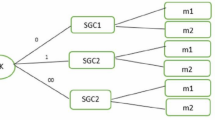Abstract
Wireless sensor networks (WSN) are usually deployed in complicated environments, for the broadcasting features of WSN, they have high requirements for the security of the network. Encrypting message is the most effective way against attacker to obtain transmitted message. This paper proposes a local dynamic scheme based on layer-cluster topological architecture to accomplish the key management progress in WSN. The scheme saves more energy by reducing negotiation progress under the conditions to protect the security of the network. In this scheme, the sensor nodes form certain cluster by its position, and elect head-cluster nodes by self-election algorithm. After network deployment, gateway node completes most of the calculation in the process of key agreement according to Chinese Remainder Theorem, and the head-cluster nodes calculate group key according to one way hash tree. The scheme can better adapt to dynamic change of the network, which has good flexibility and extensibility.









Similar content being viewed by others
References
Wu, G., He, M., & Fan, X. (2011). Study on information transmission technologies in future antiterrorism sensor network. In IEEE international conference on control, automation and systems engineering (pp. 1–4).
Hodge, V. J., O’Keefe, S., Weeks, M., & Moulds, A. (2015). Wireless sensor networks for condition monitoring in the railway industry: A survey. IEEE Transactions on Intelligent Transportation Systems, 16(3), 1088–1106.
Đurišić, M. P., Tafa, Z., Dimić, G., & Milutinović, V. (2012). A survey of military applications of wireless sensor networks. In IEEE mediterranean conference on embedded computing (MECO) (pp. 196–199).
Hackmann, G., Guo, W., Yan, G., Sun, Z., Lu, C., & Dyke, S. (2014). Cyber-physical codesign of distributed structural health monitoring with wireless sensor networks. IEEE Transactions on Parallel and Distributed Systems, 25(1), 63–72.
Bertoldo, S., Rorato, O., Lucianaz, C., & Allegretti, M. (2012). A wireless sensor network ad-hoc designed as anti-theft alarm system for photovoltaic panels. Wireless Sensor Network, 4(4), 107–112.
Liu, J. C., Huang, Y. L., Leu, F. Y., You, I., Chiang, F. C., & Yang, C. T., et al. (2013). A multiple-key management scheme in wireless sensor networks. In Security engineering and intelligence informatics. Berlin: Springer.
Messai, M. L., Seba, H., & Aliouat, M. (2015). A lightweight key management scheme for wireless sensor networks. Journal of Supercomputing, 71(12), 4400–4422.
Vijayalakshmi, V., Sharmila, R., & Shalini, R. (2015). Hierarchical key management scheme using hyper elliptic curve cryptography in wireless sensor networks. In IEEE International conference on signal processing, communication and networking (pp. 1–5).
Lin, L., Ru-chuan, W., Bo, J., & Hai-ping, H. (2006). Research of layer-cluster key management scheme on wireless sensor networks. Journal of Electronics & Information Technology, 28(12), 2394–2397.
Zhang, Y., Li, X., Liu, J., Yang, J., & Cui, B. (2012). A secure hierarchical key management scheme in wireless sensor network. International Journal of Distributed Sensor Networks, 8, 1129–1132.
Sang, J., Fang, Q., & Xu, C. (2017). Exploiting social-mobile information for location visualization. ACM Transactions on Intelligent Systems and Technology (TIST), 8(3), 39.
Sang, J., Xu, C., & Liu, J. (2012). User-aware image tag refinement via ternary semantic analysis. IEEE Transactions on Multimedia, 14(3), 883–895.
Sang, J., & Xu, C. (2012). Right buddy makes the difference: An early exploration of social relation analysis in multimedia applications. In ACM international conference on multimedia (pp. 19–28).
Acknowledgements
The authors acknowledge the National Natural Science Foundation of China (U153610079, 61762086, U1536118) and the project (2016QY06X1205).
Author information
Authors and Affiliations
Corresponding author
Rights and permissions
About this article
Cite this article
Sun, B., Li, Q. & Tian, B. Local Dynamic Key Management Scheme Based on Layer-Cluster Topology in WSN. Wireless Pers Commun 103, 699–714 (2018). https://doi.org/10.1007/s11277-018-5471-5
Published:
Issue Date:
DOI: https://doi.org/10.1007/s11277-018-5471-5




